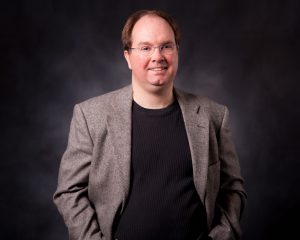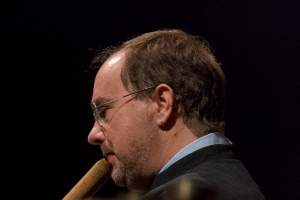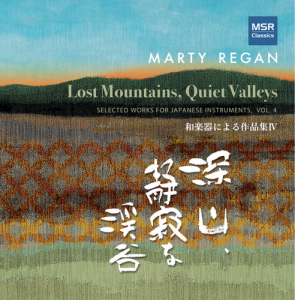Illuminating Humanities: Martin Regan
Highlighting Humanities Research and its Impact
Martin Regan | Performance Studies

Dr. Martin Regan
Professor, Head of Performance Studies, Texas A&M
The Glasscock Center is excited to continue its series which highlights humanities research at Texas A&M, and the vital role played by the humanities at the university and in the world beyond the academy.
For this highlight, we invite Martin Regan, Glasscock Faculty Research Fellow, to tell us about his project on Japanese performing arts from the 7th century to the present day.
Tell us a bit about your current research project.
During the 2022-23 academic year I have been awarded a Fulbright US Scholar Award to conduct research in Japan. I plan to write a monograph titled Soundscapes of Japan: From Past to Present, which will be completed while in residence at the Institute of Contemporary Japanese Music affiliated with Senzoku Gakuen College of Music (Tokyo) and the Research Institute for Japanese Traditional Music (Kyoto). With a focus on Japanese performing arts from the 7th century to the present day, my intention is to address a need in the field for a single authoritative source that emphasizes praxis and the intersection of the historical and the present. I envision it as a practice-oriented textbook for courses in Japanese music, theater, and other modern genres of Japanese performance as well as a primary intercultural resource for composers and scholars interested in hōgaku (traditional Japanese music).
What inspired your interest in this topic, and why is this topic significant?
 Since 2000, I have cultivated a deep relationship with the musical culture of Japan and have lived there on and off since 1995. My compositional work over the past two decades has been focused on expanding and developing the repertoire of contemporary music for traditional Japanese instruments and creating hybrid musical soundscapes that transcend imagined musical boundaries between cultures. My unique perspective both an a “insider” and “outsider” and my Japanese language skills allows me to serve as a cultural ambassador between Japanese and English-speaking communities. In a sense, I represent a perspective that is an alternative to texts currently focused on Japanese traditional music and theater written by ethnomusicologists. My compositional activities are a window to connect to the Japanese musical community. It is through my music that this community has come to know and trust me. Due to my extensive network of Japanese colleagues and my Japanese language skills, I offer a distinct emic, or “insider” perspective that allows me to serve as a conduit for international educational exchange. This monograph represents the transfer and sharing of my experiences through the personal lens of an intercultural composer, drawing upon over twenty years of engagement and collaborations in the world of Japanese music.
Since 2000, I have cultivated a deep relationship with the musical culture of Japan and have lived there on and off since 1995. My compositional work over the past two decades has been focused on expanding and developing the repertoire of contemporary music for traditional Japanese instruments and creating hybrid musical soundscapes that transcend imagined musical boundaries between cultures. My unique perspective both an a “insider” and “outsider” and my Japanese language skills allows me to serve as a cultural ambassador between Japanese and English-speaking communities. In a sense, I represent a perspective that is an alternative to texts currently focused on Japanese traditional music and theater written by ethnomusicologists. My compositional activities are a window to connect to the Japanese musical community. It is through my music that this community has come to know and trust me. Due to my extensive network of Japanese colleagues and my Japanese language skills, I offer a distinct emic, or “insider” perspective that allows me to serve as a conduit for international educational exchange. This monograph represents the transfer and sharing of my experiences through the personal lens of an intercultural composer, drawing upon over twenty years of engagement and collaborations in the world of Japanese music.
What do you find rewarding in your work?
“Music composition is a poetic way for me to critically engage with the world and
document my experiences while developing a life-affirming sensitivity to the
changes in my life and society at large.”
Many people often ask me why I am drawn to music composition. The answer I usually give is this: music composition is a poetic way for me to critically engage with the world and document my experiences while developing a life-affirming sensitivity to the changes in my life and society at large. Also, it is a tool to passionately connect with other human beings, both in the sense of reaching out to audiences who become familiar with my creative work, as well as opening up doors to forge life-long bonds of friendships with performers, choreographers, directors, actors, librettists, dancers, visual artists and others involved in the creative arts who I have opportunities to collaborate with.
Silence (2015), for soprano, shakuhachi, 13-string koto, violoncello, violin,
piano, and percussion (poem by Tanikawa Shuntarō, b. 1931)
Why are the humanities and humanistic social sciences important to society as well as to you personally, especially in the current moment?
“I think that deep engagement in the humanities provides opportunities to develop
our critical thinking skills and recognize agency—and in turn, truth—in written texts and visual media.”
One of the defining features of life at this moment in time is our increasing inability to distinguish fact from fiction. The terms “post-truth” or “post-factual” are most often associated with politics, but I believe that in an age of mass media the implications are far broader. It seems to me that voices that are frequent, repetitive, and loud tend to receive the most “airtime” in modern society, and when presented through distribution channels that appear to be vetted and legit, it gives the false impression of legitimacy and authority. On the other hand, I think that deep engagement in the humanities provides opportunities to develop our critical thinking skills and recognize agency—and in turn, truth—in written texts and visual media. As a pedagogue, I believe that this is by far the most important skill I can impart to my students so that they can become critically engaged citizens.
Besides your work, what is something you are passionate about? 
I have countless hobbies (too many, really!); I enjoy cycling, yoga, photography, visiting art museums, attending concerts, pastel and acrylic landscape painting, indigo and resist-dyeing, craft and design, and of course, traveling to foreign countries. I am deeply passionate about the visual arts, and I believe that engaging with art can inspire us to lead better lives. As philosopher Alain de Botton writes in Art as Therapy, art is “a therapeutic medium that can help guide, exhort, and console its viewers, enabling them to become better versions of themselves” (2013, p. 5).
What are some future research projects that you are, or want to, work on?
 My lifetime project is to record and release my works for traditional Japanese instruments, which is in excess of 80 and growing year by year. To date, I have released Volumes 1-4 under the “Selected Works for Japanese Instruments” series with Parma Recordings and MSR Classics. My most recent compact disc release, titled “Lost Mountains, Quiet Valleys” features music inspired by the sweeping mountain landscapes of Taos, NM, a magical place that I have frequented since 2015.
My lifetime project is to record and release my works for traditional Japanese instruments, which is in excess of 80 and growing year by year. To date, I have released Volumes 1-4 under the “Selected Works for Japanese Instruments” series with Parma Recordings and MSR Classics. My most recent compact disc release, titled “Lost Mountains, Quiet Valleys” features music inspired by the sweeping mountain landscapes of Taos, NM, a magical place that I have frequented since 2015.
While I am in Japan during this upcoming academic year, I hope to expand my network of colleagues and explore possibilities for future collaborative research and creative projects.
